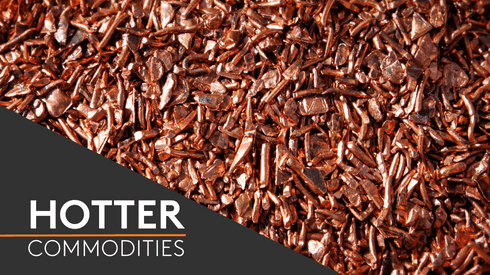Edward Meir of INTL FCStone has scooped first place on the overall leaderboard for price forecasts in base metals during 2011, with 95.8% accuracy across all six.
For the full year, Meir took the top spot across all metals, with the exception of aluminium, where he came third.
In copper, Meir, who writes a daily report for Metal Bulletin and formerly worked for MF Global, managed 97.6% accuracy, while in zinc, it was 97.3%, in tin, 92.6%, in nickel, 95.2%, in lead, 97.2%, and in aluminium, 95.2%.
“The main things we look at in our forecast reports are currencies, fund flows, external markets, and perhaps lastly, fundamentals,” he told Metal Bulletin.
“The fundamentals would have been on top in years gone by, but now, they’re on the bottom, as other things displace them.”
Factors to be taken into account are always changing, according to Meir, and especially as volatility continues to reign across most markets.
“Things are unpredictable. We’re still grappling with the European crisis, and just a few months ago, there were predictions about the demise of the euro,” he said.
“The Middle East is also completely in upheaval. There are sweeping revolutions in a number of countries, and you have to watch out for other black swan events – will protests spread to Russia or China?” Meir added.
Unexpected major world events can upset long-term forecasts, he said, meaning short term predictions are now more reliable.
“We’ve guided people very much to go short-term. The reason we did well in our forecasts was that we saw these events as bearish for commodities,” Meir said.
“We didn’t join in with the hype on the upside. The euro was a big cloud that people didn’t really fully appreciate. Every time there was an agreement, people would forget until it reared its head again.”
When commodity prices rallied earlier in 2011, furthermore, analysts at what was then MF Global became “gun shy” because of the volatility in the euro, Meir added.
“We didn’t want to join the crowd because interest rates were going higher across the board, and we thought that would impact demand,” he said.
“There’s always a surprise, so you have to adapt your models, and not get stuck into a particular mode of thinking.”
To make an accurate forecast, moreover, one must not be swayed by “group thinking”, and must be prepared to make changes when necessary.
“There are a lot of institutions that have a consistent bias toward price traction, and they don’t seem to change it, no matter what happens,” Meir said.
“What’s really struck me is that even when the market proves them wrong, they don’t change their thinking. It would behove them to be flexible, and say when they are right or wrong.”
Claire Hack
chack@metalbulletin.com
Twitter: @clairehack_mb




